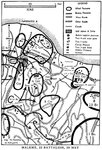P38 Pilot
Tech Sergeant
First off, my Cadet Commander isn't even an officer right now. He's been going through basic training like any other soldier would.
Besides, whats happened to the spirit?! You'd think the moral would be high?
Besides, whats happened to the spirit?! You'd think the moral would be high?


